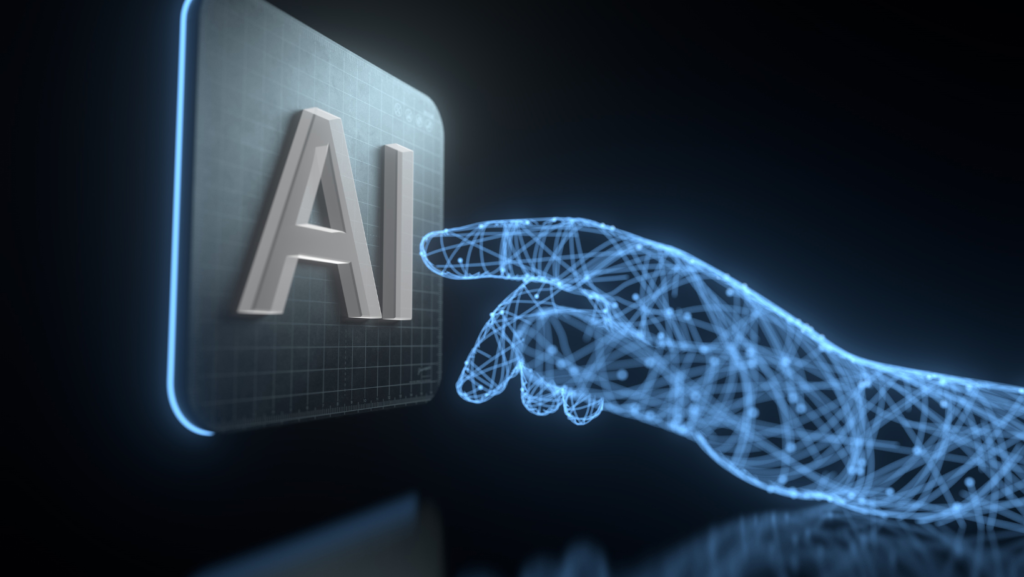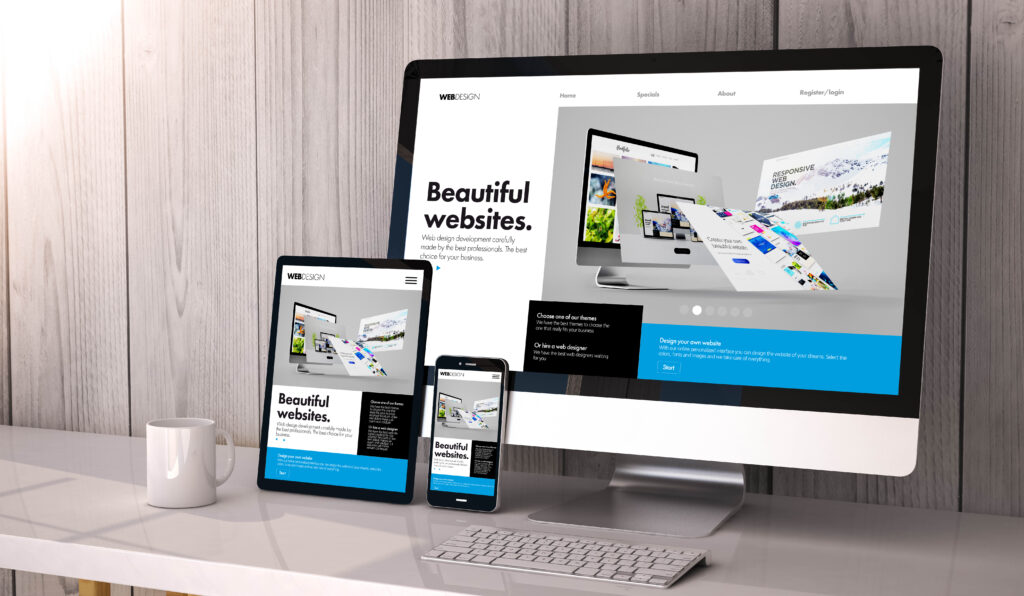In the rapidly evolving world of technology, the fusion of Web Design and Artificial Intelligence (AI) has emerged as a groundbreaking trend, promising to reshape the landscape of online experiences. As these two fields intertwine, the potential for innovation in web development and design is boundless. This dynamic synergy not only paves the way for enhanced efficiency and creativity but also sets the stage for a future where digital platforms are more intuitive, engaging, and tailored to individual user needs. Let’s explore how the amalgamation of Web Design and AI is sculpting the future and what new horizons it promises to unveil.
Understanding the Basics of AI in Web Design
The incorporation of Artificial Intelligence into the realm of web design signifies a paradigm shift towards automated, intelligent solutions that can learn, evolve, and make informed decisions. This transformation utilises advanced AI technologies, including machine learning, natural language processing, and neural networks, to revolutionise traditional design methodologies. By automating design tasks, analysing user data comprehensively, and refining the overall user experience, AI paves the way for websites that are not just aesthetically pleasing but also functionally superior. These AI-infused platforms are capable of offering a more customised, accessible, and streamlined online experience, dramatically altering the way users interact with digital environments. The role of AI in this sector is multifaceted, touching upon everything from the initial design stages to the final user interaction points, making web platforms more adaptable and responsive to individual user preferences and behaviours. Through the intelligent analysis of user data and the automation of design processes, AI is setting a new standard in web development, where efficiency and personalisation are at the forefront of digital innovation. This integration of AI into web design is not merely a trend but a foundational shift that promises to redefine the boundaries of what is possible in creating engaging and user-centric online platforms.
The Automation of Repetitive Tasks
Integrating AI into the fabric of web design heralds a significant shift towards streamlining the creation and maintenance of digital platforms. By taking over routine and monotonous tasks, AI technologies empower designers to delegate the groundwork of coding structures, adjusting image dimensions, and refining SEO practices to intelligent algorithms. This transition allows for a reallocation of human creativity towards more complex and nuanced aspects of website development, where the touch of human ingenuity is irreplaceable. The advent of such automation not only propels the velocity of the design process but also enhances the accuracy and consistency of the output. The reduction in manual intervention minimises the margin for error, thereby elevating the standard of the web experiences crafted. This paradigm shift underscores a move away from laborious, repetitive work towards a model that champions strategic, creative thinking and innovation in web design. By enabling designers to focus their talents on areas where they can make the most significant impact, AI in web design fosters an environment ripe for creative exploration and experimentation. The benefits of this automation extend beyond just efficiency and productivity; they signify a transformative approach to how websites are conceived, designed, and deployed, setting a new benchmark in the digital landscape.
Enhancing User Experience through Personalisation
The incorporation of AI into web design brings forth an unparalleled capacity for tailoring online experiences to individual user profiles. This technology excels in sifting through extensive datasets to discern patterns and preferences, enabling the creation of websites that not only acknowledge but adapt to the variances in user behaviour. Such personalisation elevates the user’s journey, making interactions with digital platforms more relevant and engaging. Through the meticulous analysis of user data, AI can modify website elements in real-time — from adjusting content recommendations to optimising layout presentations for individual viewing preferences. This dynamic personalisation serves not merely to captivate users but also to foster a deeper connection between the user and the digital interface, encouraging prolonged engagement and enhancing the likelihood of conversion. Beyond just tailoring content, AI-driven personalisation extends to the functionality of websites, ensuring that users find what they need with greater ease and precision. The application of AI in personalising user experiences thus represents a significant leap forward in how digital environments are designed to cater to the nuanced demands of diverse user groups. It underscores a shift towards more empathetic and user-centric design philosophies, where the focus is firmly on delivering bespoke experiences that resonate on a personal level with each visitor. This approach not only enhances user satisfaction but also bolsters the overall efficacy of web platforms as tools for communication, commerce, and content delivery.
The Role of AI in Responsive Design
Artificial Intelligence significantly bolsters the capability of web platforms to adapt seamlessly across a plethora of devices, enhancing accessibility and usability in the digital domain. By leveraging AI, the intricate process of ensuring a website’s optimal performance, regardless of the device or screen size, is profoundly simplified. AI algorithms are adept at intuitively altering web layouts, dynamically resizing images, and fine-tuning site performance to match the specific characteristics of the user’s device. This level of intelligent adaptability not only facilitates a smoother, more cohesive user experience but also plays a critical role in boosting a site’s visibility and ranking on search engines, which are increasingly prioritising mobile adaptability in their algorithms.
Furthermore, AI’s involvement in responsive design extends beyond mere structural adjustments. It encompasses the optimisation of content delivery, ensuring that the most relevant information is presented to the user in an accessible and efficient manner. By analysing user interaction data, AI can identify patterns and preferences, allowing for the automated customisation of content layout and presentation across different platforms. This data-driven approach ensures that users are met with a consistent, yet device-appropriate, experience, enhancing engagement and satisfaction.
Through the intelligent application of AI, the barriers between diverse digital interfaces are dismantled, establishing a fluid and responsive web ecosystem. This technology empowers designers and developers to create websites that are not only visually appealing but are also inherently flexible and user-oriented, marking a significant evolution in the approach to responsive web design.
AI and the Evolution of User Interfaces
The progression of user interfaces (UI) is undergoing a remarkable transformation, driven by the integration of Artificial Intelligence. This advancement is paving the way for more predictive and interactive environments, where interfaces are not just reactive but anticipatory of user needs. The emergence of voice-activated systems, sophisticated chatbots, and AI-powered interactive assistants is revolutionising the way users engage with digital platforms. These tools provide a more natural, conversational mode of interaction, enhancing the overall user experience.
AI’s capability to analyse vast amounts of data in real-time enables these interfaces to offer personalised responses and recommendations, further refining the interaction between the digital platform and its users. The intuitive nature of AI-driven UIs simplifies navigation, making it more intuitive and reducing the learning curve for new users. This seamless interaction fosters an environment where users can engage in more meaningful ways, leading to increased satisfaction and loyalty.
The innovation doesn’t stop with voice and chat interfaces. AI is also facilitating the creation of adaptive UIs that can modify their layout and functionality based on the user’s behaviour and preferences, creating a truly bespoke experience. This level of personalisation ensures that each user’s encounter with the interface is as efficient and enjoyable as possible.
As AI continues to evolve, the potential for even more immersive and interactive user interfaces grows. This transformative journey of UI design is not just about enhancing aesthetics or functionality but about redefining the way we think about and interact with technology, making every digital experience more engaging and personalised.
Overcoming Challenges and Ethical Considerations
Navigating the integration of Artificial Intelligence into web design brings to light a myriad of ethical dilemmas and practical challenges. Paramount among these are concerns surrounding the safeguarding of data privacy and the mechanisms in place to protect against security breaches. The sophisticated capabilities of AI, whilst innovative, raise significant questions about how user data is collected, processed, and utilised without infringing upon individual privacy rights. Furthermore, the spectre of algorithmic bias looms large, with the potential to inadvertently perpetuate discrimination or unequal treatment through seemingly neutral algorithms. This underscores the necessity for designers and developers to engage in conscientious design practices that prioritise inclusivity and fairness.
Addressing these challenges requires a multifaceted approach. Striking a balance between leveraging AI for its vast capabilities and mitigating risks involves rigorous testing and continuous monitoring to identify and rectify biases or vulnerabilities. It also necessitates a commitment to transparency, where users are informed about how their data is being used and are provided with options to control their personal information. Additionally, adhering to established ethical standards and guidelines is crucial in fostering trust and ensuring that web designs powered by AI contribute positively to user experiences. Collaboration with ethicists and regulatory bodies can further guide the ethical deployment of AI in web design, ensuring that technological advancements do not come at the cost of compromising ethical principles or user trust.
Preparing for the Future of Web Design with AI
As the landscape of web design rapidly evolves under the influence of Artificial Intelligence, professionals within the field must adapt to remain at the forefront of innovation. Staying informed about the latest developments in AI and understanding its application within web design are fundamental steps for those looking to shape the digital future. This necessitates a commitment to lifelong learning and an openness to exploring new AI technologies and tools that can enhance the design process.
Engagement with a community of like-minded individuals, spanning designers, developers, and AI specialists, encourages the sharing of knowledge and experiences that are invaluable in navigating the complexities of AI integration. Such collaboration not only sparks creativity but also facilitates the cross-pollination of ideas across disciplines, leading to groundbreaking solutions in web design.
Experimentation plays a key role in preparing for the future. By actively testing and implementing AI-driven design tools and methodologies, designers can gain firsthand experience of their potential impact and limitations. This practical approach allows for the refinement of techniques and the development of best practices tailored to harnessing AI’s capabilities effectively.
Moreover, fostering a culture of innovation within organisations and teams ensures that embracing AI in web design is seen as an ongoing journey rather than a destination. It encourages a mindset that is always questioning, always learning, and always looking forward to the next technological breakthrough that could revolutionise how we think about and execute web design in an AI-driven era.
The Next Frontier: AI-Driven Creativity in Web Design
The future landscape of web design is poised for a seismic shift, with Artificial Intelligence at the helm of this transformation. The advent of AI-driven creativity marks a pivotal moment, where the boundaries between human ingenuity and machine learning begin to blur. AI’s role is evolving from a tool for automation to a partner in the creative process, offering unprecedented opportunities for innovation in web design. This collaboration between designers and AI is enabling the exploration of new creative vistas, from the generation of novel design concepts to the creation of visually stunning and uniquely interactive user experiences.
As AI technologies grow more advanced, they are not just streamlining design workflows but are actively contributing to the genesis of design elements themselves. This involves AI algorithms suggesting layout designs, colour schemes, and even dynamic content tailored to user preferences, all of which were traditionally the domain of human creativity. Such capabilities challenge our conventional understanding of creativity, suggesting a future where AI’s role in design is indistinguishable from that of human designers.
Embracing AI-driven creativity requires a shift in perspective, viewing AI as a collaborator that enhances and extends human potential rather than as a replacement. This approach not only enriches the creative landscape of web design but also ensures that digital platforms remain at the cutting edge of innovation, personalisation, and user engagement. As we venture into this new territory, the symbiosis of AI and web design promises to redefine the essence of creative expression in the digital age.



